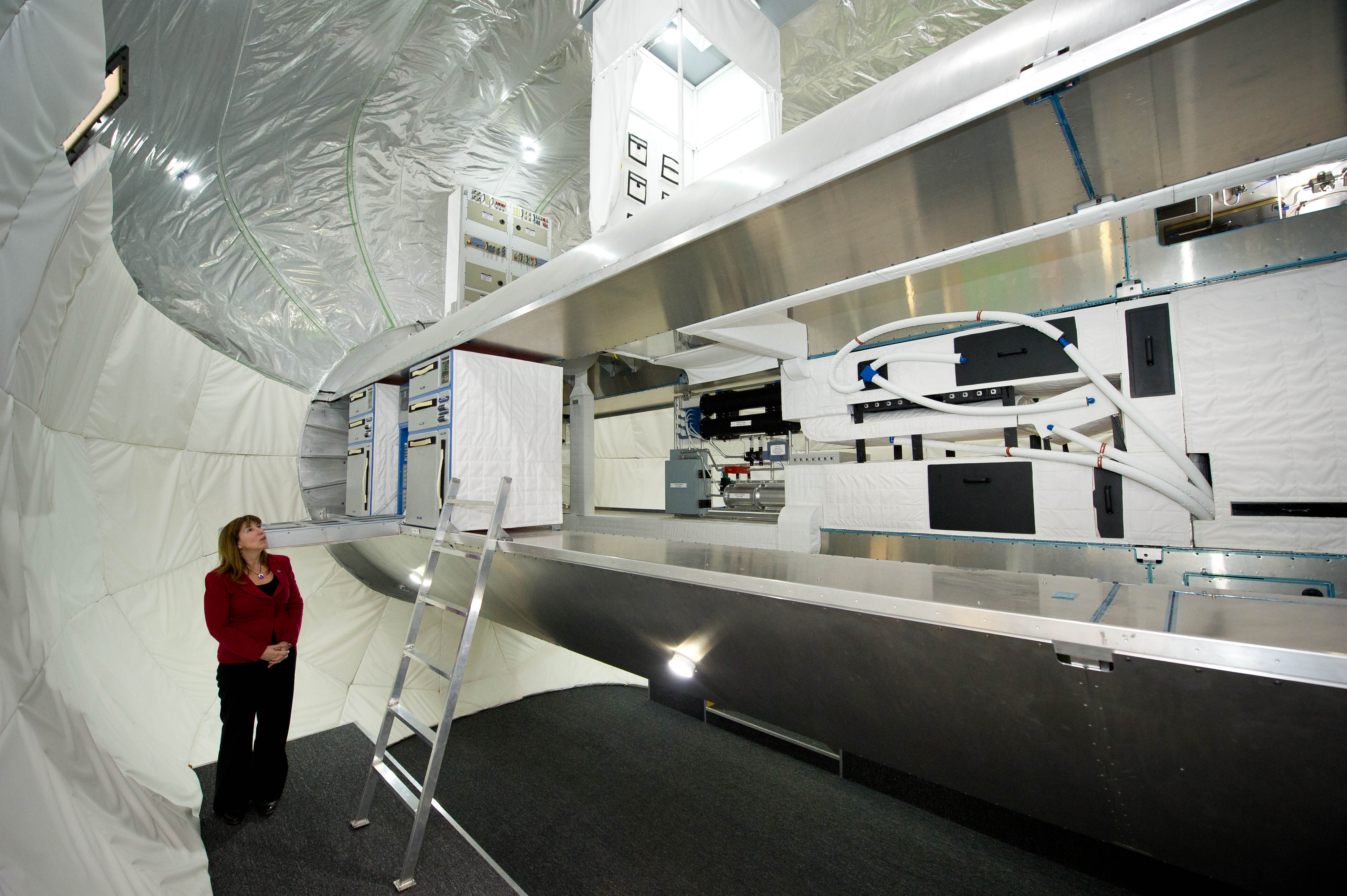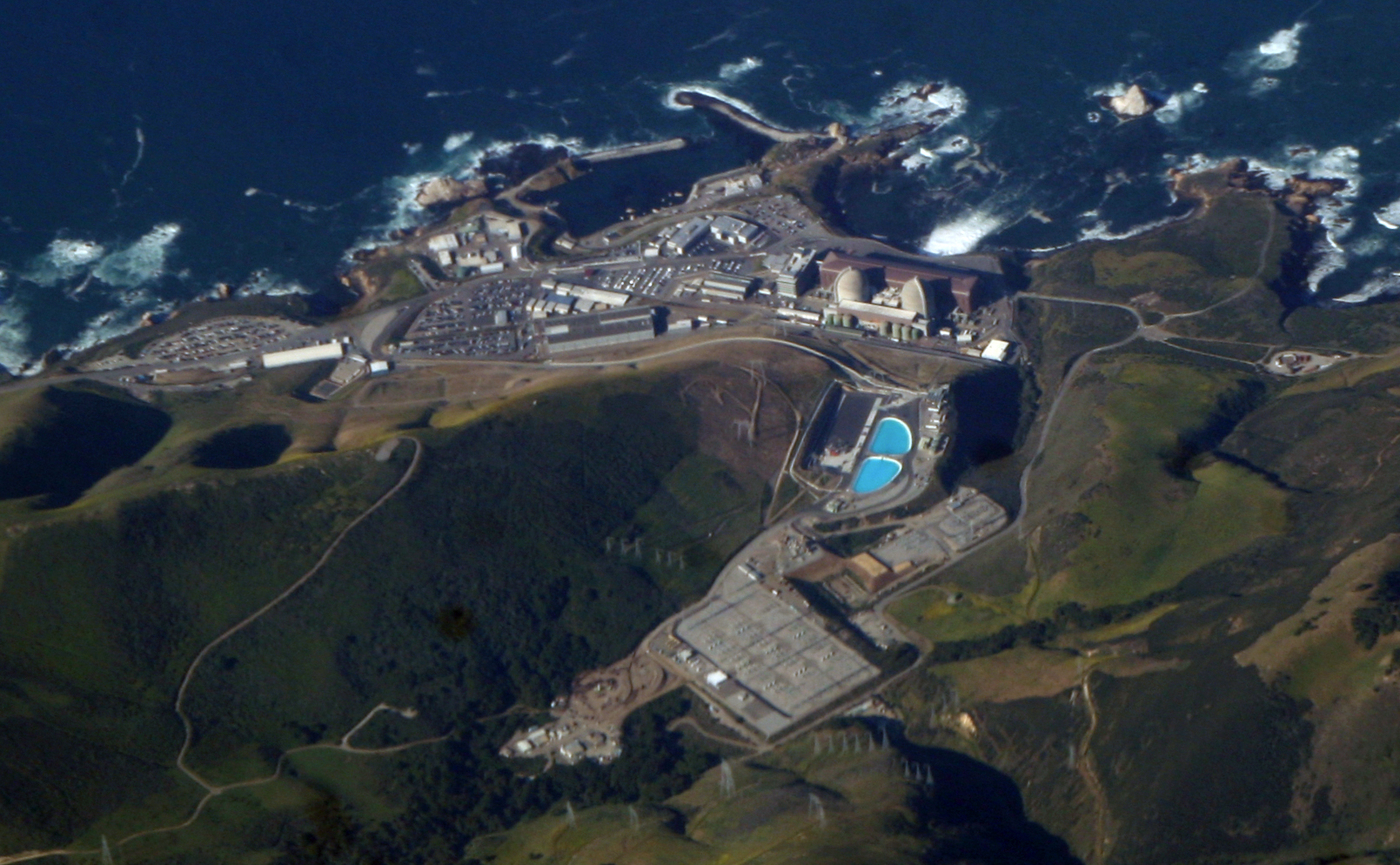It's still Monday in El Paso, so this totally counts.
Today was a day of cognitive dissonance. After taking one of the worst tests of my life on perturbation theory and all her friends I was in a foul mood. Cramming all weekend for an exam and still feeling that nauseating sensation of non-understanding when you see said exam on Monday doesn't exactly inflate the self-esteem. An hour later I was in Dr. V's office while he described me as one of the best students he's ever worked with. Insanity.
A much more exciting brand of insanity is presented in the sport of wingsuit base jumping:
This is high on my list of absurd but wonderful things I want to do.
Tuesday, March 29, 2011
Tuesday, March 22, 2011
The Fruitful Path
After President Obama released a budget that called for a sharp change in NASA's direction last year, I wrote a piece for the SEDS newsletter, NOVA, defending the policy change. The idea was hotly contested since it called for a radical change in the way NASA does business with its contractors. Rather than doing most of its engineering in-house and closely supervising contractors under cost-plus contractors, the idea was that NASA should move toward encouraging private sector development of transportation services to space and buy these services as a commercial customer. Since politicians usually don't like things that rock the boat, and this rocked a lot of boats all at once, there was a lot of rage in Congress against the idea, and I think it still needs defending a year later. Here's a piece I recently wrote for NOVA about why this is a good move for NASA:
Recently I had the chance to represent the students of Texas A&M at a meeting with a veteran member of the aerospace industry. Given his extensive experience as a professor early in the aerospace engineering department’s history at A&M, the Southwest Research Institute, NASA Johnson Space Center, and the National Academy of Engineering, I found his insight into the field interesting and illuminating. Still, I couldn’t help but be bothered by a few comments he made about NASA, its history, and its current status.
It took eight years to go from Alan Shepherd’s first suborbital hop in Mercury to the bootprints of Armstrong and Aldrin on the Moon. In the last eight years, he asked, what has NASA accomplished that could possibly compare to this technological leap? Not much, the students replied, questioning why the NASA of the 1960s seemed so different from the NASA of the 2010s.
His reply was direction. While NASA managed a number of smaller scientific and aeronautics missions during the Mercury, Gemini, and Apollo programs, the reason for its existence could be fully described in one sentence: “To achieving the goal, before this decade is out, of landing a man on the Moon, and returning him safely to the Earth.” It would take at least a paragraph, and probably several, to completely outline NASA’s mission today. Clearly our national space program has become a much more diverse endeavor over the last 40 years, and many of the Apollo generation claim that it has suffered from requirement bloat. Give NASA a simple, grand mission, and rebooting human space exploration beyond low Earth orbit will follow naturally, the argument goes.
It’s an appealing argument, to be sure, and it’s not entirely false. Given a clear directive and adequate funding, I’m sure NASA could return astronauts to the Moon or send them to the asteroids in a decade or so without changing the way it does business. Many in industry and congress are lobbying for the development of heavy-lift launch vehicles and a restoration of elements of the Constellation program because they see the clarity of this path. Unfortunately, while the path of business-as-usual and clear, simple directives can accomplish great things in the near-term, it does so at great cost and leaves long-term prospects for space exploration and settlement barren.
We rightly hail the Apollo program as a major achievement of human ingenuity and industry, and marvel that the engineers of the day could go so far with tools so primitive by today’s standards. But in lauding the accomplishments of Apollo, the legacy of the program is often forgotten. It turns out that the fastest, most straightforward path to the Moon didn’t lead to an enduring long-term human presence in space. The requirements of the Apollo program were well-posed but misleading from the more poorly-posed requirements of how to enable lasting human presence beyond LEO. The dilemma NASA now faces is this: either opt for a clear path to a near-term objective, or a murkier path that seeks the long-term optimum. I argue that though the long-term path may delay human departure from LEO and requires a paradigm shift in NASA’s operations, this is the fruitful path for the agency’s – and humanity’s – future.
What does NASA need to do in-house to enable an enduring presence beyond Earth orbit? Not human-rated launch vehicles, since Lockheed Martin, Boeing, and SpaceX offer options that can be adapted for crew launch for less than the price of a single shuttle launch. Not a Space Shuttle extension, since the shuttle’s program cost is prohibitive to the development of major new hardware. Not even heavy-lift launch vehicles, since their extraordinary development and operation cost outweigh the benefit form eliminating on-orbit construction given realistic assumptions about these costs. The private aerospace sector is ready today or very close to ready to provide NASA all the services it requires between the Earth’s surface and LEO. It’s time for NASA to harness this capability and work on the problems of keeping astronauts alive and productive in deep space, not the problem of lifting off the ground.
Since launch and crew transport have traditionally been a mainstay of NASA human spaceflight, this notion is a radical one. The suggestion that our national space program abandon the launch vehicle business enrages politicians concerned about rocking the boat at their local NASA centers, but this is a necessary step if we truly want to develop robust vehicles for human spaceflight. If much of NASA’s annual budget is devoted to the design, development, and production of launch systems, there simply won’t be enough resources to go around to design the spacecraft we need to maintain a permanent presence on the Moon and journey to the asteroids and beyond. To make a Moon base, you need to design a Moon base, not a rocket.
Ultimately the goals of most space advocates are the same. We all want to see humanity’s reach extend beyond the limit of the atmosphere, and one day this will mean the exploration of deep space and a permanent human presence there. The opinions diverge on the best way to achieve this, and I argue that leveraging the capabilities of the private sector, as NASA plans to do through commercial crew development and cargo resupply programs, is the most fruitful path to restarting human exploration beyond LEO in a sustainable way. As long as NASA insists on developing all its launch vehicles and transports in-house and through cost-plus contracting, the growth of humanity in space will be limited. By working with the private sector and splitting responsibilities for transport to and beyond LEO, NASA will begin the march toward a true frontier in space, though this march may look quite different from the drama of Apollo. But for building a true frontier, it’s the slow, methodical steps that count, not the grand drama.
Monday, March 21, 2011
A Brief Monday Interlude: Daft Ponypunk
Monday is my fully-populated day this semester. Between class, lab meetings, lab work, airplane work, and organizational meetings, Monday is a bad day for me to get anything done, particularly anything non-school related that takes effort. So instead of blogging I'm thinking of just dropping a link to something I found interesting in the last week.
That Daft Punk are awesome has been widely understood for some time. Only this last weekend, however, did I discover that the inauspiciously-titled cartoon My Little Pony: Friendship is Magic is... actually kind of awesome too. Or at least, within the context of the internet subculture devoted to the show, it is. Maybe my sanity has just departed completely. Regardless, I have to say that I approve of this hybrid of Daft Punk and MLP:
Link here because embedded viewer is sadface
That Daft Punk are awesome has been widely understood for some time. Only this last weekend, however, did I discover that the inauspiciously-titled cartoon My Little Pony: Friendship is Magic is... actually kind of awesome too. Or at least, within the context of the internet subculture devoted to the show, it is. Maybe my sanity has just departed completely. Regardless, I have to say that I approve of this hybrid of Daft Punk and MLP:
Link here because embedded viewer is sadface
Sunday, March 20, 2011
The Tyranny of Probability
Image Source
"I never thought I'd see the day" is a phrase I don't say very often, but it comes close describing what went through my mind after hearing about the hydrogen explosion at the Fukushima I nuclear plant last Saturday. Followed up as that first explosion was by additional explosions, partial meltdowns, and a fire, the situation in Japan has looked pretty grim since the earthquake and tsunami of last Friday. Judging by the media reaction you might think a serious catastrophe is in the making at Fukushima, while a real catastrophe is already unfolding across the Japanese coastline. The talking heads are already speculating in that gleeful way they do how this will affect the prospects for renewed, or at least static, development of nuclear power, and the consensus is nearly unified against the idea.
Knocking the momentum out of the nuclear renaissance, such as there is one, would be an unfortunate and ill-advised way to respond to the Fukushima crisis. It takes power to run a technological civilization. Sure, you can and should take steps to use energy more efficiently and reduce per capita demand for its production, but to deny that we'll need the amount of power we produce today, if not much more, for a long time into the future is to deny the entire history of the industry. The question is not whether human civilization should produce power on an industrial scale for the foreseeable future, it must. The question is best posed as follows: what's the best way to produce the amount of power we need with the least detrimental consequences to the environment?
Image source
With wind turbines producing electricity at a cost competitive with coal, renewable energy is a serious contender for the first time. Wind power can and should be implemented on a large scale wherever practical, and I'm heartened to see the turbine blades whipping through the desert every time I drive through the desert mountains of west Texas and southern California. Renewables alone simply aren't ready to take over all the grid's needs yet, though, and steadier sources will be required for a long time.
Reliable, portable electricity, that doesn't depend on damming the few remaining untouched rivers or tapping into capricious sources of geothermal heat, leaves us with three options that can be implemented on a vast scale. Coal, natural gas, or nuclear?
On price alone, coal is the clear winner, as the market economy of the US and the command economy of China have both selected it as such. But while nuclear power still has a dreadful image in the public eye from accidents like Three Mile Island, Chernobyl, and recently Fukushima, coal is little feared. This is curious given the coal industry's damage to health and the environment at every stage of production and power generation. Extraction and production destroy mountains, pollute rivers, dump sulfur dioxide and (ironically) uranium into the atmosphere, and are a real danger the miners and users affected by these operations. There are no coal power disasters because every day we mine and burn coal is a disaster unfolding in slow motion. Natural gas plants are, in general, less dirty than their coal-fired counterparts, but their emission still contribute to the stock of man-made greenhouse gases and the supply of natural gas is more limited than that of coal. There must be a better, feasible way.
Nuclear power isn't perfect. It still requires some mining, breeding reactors generates weapons-grade material, nuclear waste must be properly handled, and accidents can happen, despite our engineers' best efforts to prevent them. But there are feasible engineering and regulatory solutions to all these problems, and if embraced on a large scale nuclear power can handle the needs of our society for generations to come while posing the least risk to public health of any viable energy generations option. The accidents, like the one at Fukushima, are unfortunate, and I wish the workers the best in keeping things under control. When the dust settles, though, few, if anyone, in the Japanese public will be harmed, and the nuclear industry should be vindicated for averting the kind of environmental disaster that is business-as-usual for coal.
Saturday, March 19, 2011
Conservation and Progress
One of the nice things about my current status is that whenever the intractable is-the-Catholic-Church-convincing problem becomes overwhelming I can always examine the intractable where-should-I-go-to-grad-school problem. I felt motivated, optimistic, and foolhardy enough last semester to apply to five programs. From west to east, they are:
1) The University of Colorado at Boulder
2) Texas A&M University
5) The Massachusetts Institute of Technology
It should be noted that I only took the first two of those five pictures. MIT wait-listed me and I don't expect to hear back from them until late May. Likewise, I was admitted at Colorado but they offered no funding, so I'm considering those two applications dead. It's unfortunate, since both are doing great work in spacecraft human factors, but that's part of why I applied to five schools instead of one or two.
A&M, Purdue, and Georgia Tech have been generous with their offers of financial support, and all have top-notch programs I would be excited to join. Frankly I'm a little embarrassed about how generous the offers have been. After visiting Georgia Tech and completing seven and a half semesters at A&M I think I'm most qualified to asses these two options. For the sake of conservation of sanity, I've downselected my choice to a simple dilemma. Georgia or Texas?
The decision isn't really Georgia vs. Texas, though. It's not even College Station vs. Atlanta or Bright Building vs. Guggenheim Building. I know Texas A&M intimately after three and a half years here. It's home. I know what the people are like, how muggy it is in August, how long it takes to get from West Campus Garage to the engineering side of campus. I know precious little about Georgia Tech since I only visited there for a few days and talked to a few professors and grad students for a matter of hours. If I stay at A&M I will be delving deeper down a well-lit path; if I go to Georgia Tech it'll be a leap into the dark, an embrace of unknowns.
Both programs are doing world-class research in the field I want to work in. Both are well-respected and will give me about the best preparation for entering engineering that I could reasonably ask for. But after being here for my undergrad program, I know A&M works. I like the faculty, the students, the town, and the fact that everyone screams so loudly on Saturdays in the fall. Going to Georgia Tech will give me the chance to experience life in a different culture and setting, expand my network of colleagues, and indulge my wanderlust a bit more. Still, there's risk in that indulgence, and I'm not sure which argument comes out ahead.
Deep down, this decision is a reflection of something I need to define for myself. If I am a conservative, at least in this context, I'll stick with what I know works well and engage Texas A&M to the fullest. If I'm a progressive, I'll branch out, and try my luck to the east. I'll get back to you on which one of those I decide.
Subscribe to:
Posts (Atom)









